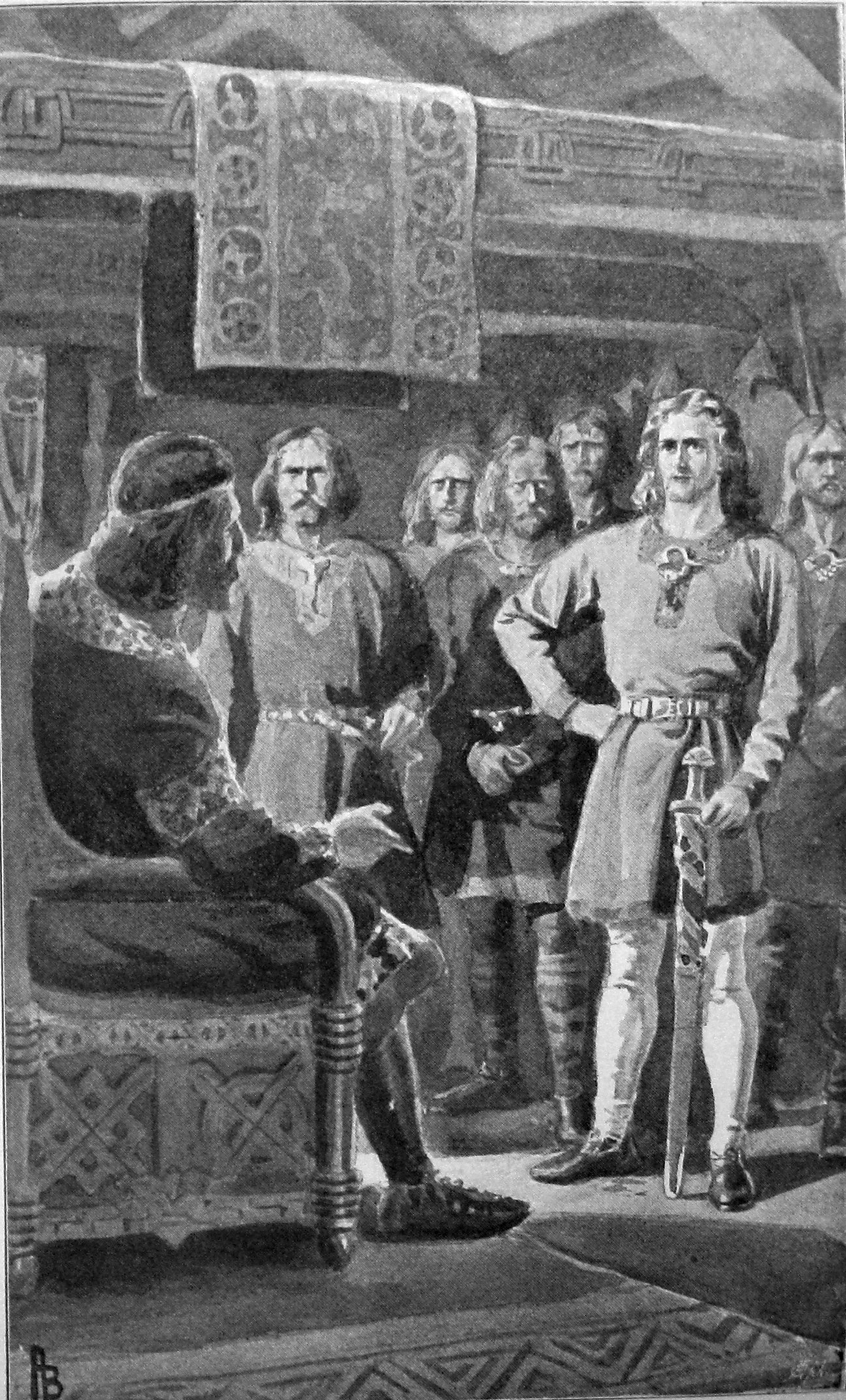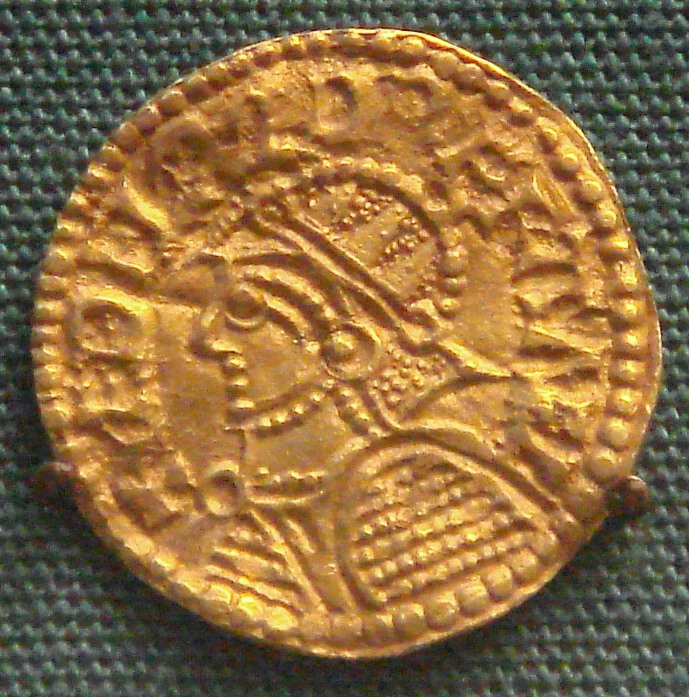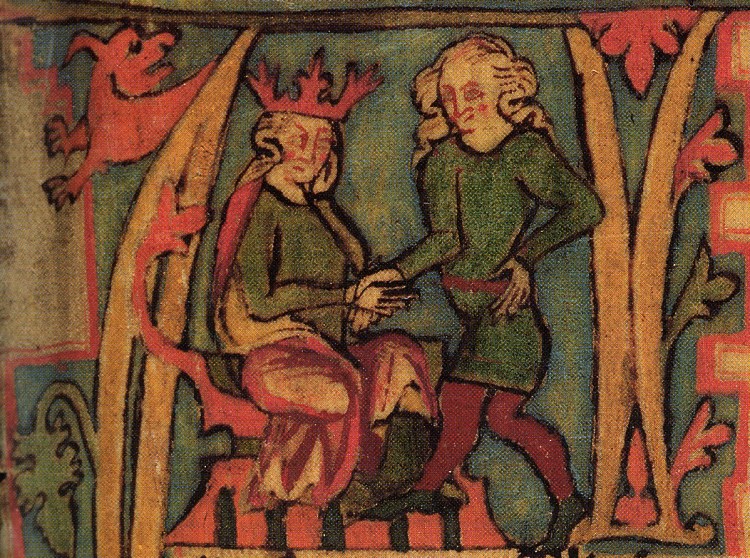|
Gunnlaugr Wormtongue
Gunnlaugr ormstunga (Old Norse: ; ; "serpent-tongue") was an Icelandic skald. His life is described in '' Gunnlaugs saga ormstungu'', where several of his poems are preserved. Gunnlaugr was born ca. 983. From an early age he proved himself impetuous, audacious, brave, and tough. He was also a skilled author of mostly derogatory poems, which earned him the cognomen ''ormstunga'' "serpent-tongue". After a quarrel with his father, Illugi, Gunnlaugr left his home at the age of twelve to stay for some time at Borg with Þorsteinn Egilsson, the son of Egill Skallagrímsson. There, he became acquainted with Þorsteinn's daughter, Helga the fair, reputedly the most beautiful woman on Iceland. Her hair was so ample that she could hide herself in it. When Gunnlaugr was eighteen, he went abroad. At that time, Helga became his fiancée, on the condition that she would wait no more than three years for Gunnlaugr. He visited the courts of Norway, Ireland, Orkney and Sweden and England. In S ... [...More Info...] [...Related Items...] OR: [Wikipedia] [Google] [Baidu] |
Æthelred The Unready
Æthelred II (,Different spellings of this king's name most commonly found in modern texts are "Ethelred" and "Æthelred" (or "Aethelred"), the latter being closer to the original Old English form . Compare the modern dialect word . ; ; 966 – 23 April 1016), known as Æthelred the Unready, was List of English monarchs, King of the English from 978 to 1013 and again from 1014 until his death in 1016. His epithet comes from the Old English word meaning "poorly advised"; it is a pun on his name, which means "well advised". Æthelred was the son of Edgar, King of England, King Edgar and Ælfthryth (wife of Edgar), Queen Ælfthryth. He came to the throne at about the age of 12, following the assassination of his elder half-brother, King Edward the Martyr. The chief characteristic of Æthelred's reign was conflict with the Danes (tribe), Danes. After several decades of relative peace, Danish raids on English territory began again in earnest in the 980s, becoming markedly more se ... [...More Info...] [...Related Items...] OR: [Wikipedia] [Google] [Baidu] |
1008 Deaths
Year 1008 ( MVIII) was a leap year starting on Thursday of the Julian calendar. Events By place Europe * Olaf Haraldsson, future king of Norway, makes raids in the Baltic Sea. He lands on the Estonian island of Saaremaa, wins a battle there, and forces the inhabitants to pay tribute. * Battle at Herdaler: Olaf Haraldsson sails to the southern coast of Finland to plunder, where he and his men are ambushed and defeated in the woods. * The oldest known mention is made of the city of Gundelfingen (Southern Germany). * Unification of the Georgian realm. * In England, King Æthelred the Unready orders a new fleet of warships built, organised on a national scale. It is a huge undertaking, but is completed the following year. Arabian Empire * Caliph Al-Hakim bi-Amr Allah sends a tributary mission to Emperor Zhenzong of the Song dynasty in order to reestablish trade relations between the Fatimid Caliphate and China (approximate date). Japan * November 13 – Kamo ... [...More Info...] [...Related Items...] OR: [Wikipedia] [Google] [Baidu] |
980s Births
98 may refer to: * 98 (number) * Windows 98, a Microsoft operating system * 98 Ianthe, a main-belt asteroid * Oldsmobile 98, a full-sized luxury car Years * 98 BC * AD 98 AD 98 (Roman numerals, XCVIII) was a common year starting on Monday of the Julian calendar. At the time, it was known as the Year of the Roman consul, Consulship of Nerva, Augustus and Traianus (or, less frequently, year 851 ''Ab urbe condita'') ... * 1998 * 2098 See also * Californium (atomic number), a chemical element * 98 Degrees (98°), a band {{numberdis ... [...More Info...] [...Related Items...] OR: [Wikipedia] [Google] [Baidu] |
Viking Warriors
Vikings were seafaring people originally from Scandinavia (present-day Denmark, Norway, and Sweden), who from the late 8th to the late 11th centuries raided, pirated, traded, and settled throughout parts of Europe.Roesdahl, pp. 9–22. They also voyaged as far as the Mediterranean Sea, Mediterranean, North Africa, the Middle East, Greenland, and Vinland (present-day Newfoundland in Canada, North America). In their countries of origin, and some of the countries they raided and settled in, this period is popularly known as the Viking Age, and the term "Viking" also commonly includes the inhabitants of the Scandinavian homelands as a whole. The Vikings had a profound impact on the Early Middle Ages, early medieval history of Northern Europe, northern and Eastern Europe, including the political and social development of England (and the English language) and parts of France, and established the embryo of Russia in Kievan Rus'. Expert sailors and navigators of their cha ... [...More Info...] [...Related Items...] OR: [Wikipedia] [Google] [Baidu] |
11th-century Icelandic Poets
The 11th century is the period from 1001 (represented by the Roman numerals MI) through 1100 (MC) in accordance with the Julian calendar, and the 1st century of the 2nd millennium. In the history of Europe, this period is considered the early part of the High Middle Ages. There was, after a brief ascendancy, a sudden decline of Byzantine power and a rise of Norman domination over much of Europe, along with the prominent role in Europe of notably influential popes. Christendom experienced a formal schism in this century which had been developing over previous centuries between the Latin West and Byzantine East, causing a split in its two largest denominations to this day: Roman Catholicism and Eastern Orthodoxy. In Song dynasty China and the classical Islamic world, this century marked the high point for both classical Chinese civilization, science and technology, and classical Islamic science, philosophy, technology and literature. Rival political factions at the Song dynasty ... [...More Info...] [...Related Items...] OR: [Wikipedia] [Google] [Baidu] |
Eiríkr Magnússon
The given name Eric, Erich, Erikk, Erik, Erick, Eirik, or Eiríkur is derived from the Old Norse name ''Eiríkr'' (or ''Eríkr'' in Old East Norse due to monophthongization). The first element, ''ei-'' may be derived from the older Proto-Norse ''* aina(z)'', meaning "one, alone, unique", ''as in the form'' ''Æ∆inrikr'' explicitly, but it could also be from ''* aiwa(z)'' "everlasting, eternity", as in the Gothic form ''Euric''. The second element ''- ríkr'' stems either from Proto-Germanic ''* ríks'' "king, ruler" (cf. Gothic ''reiks'') or the therefrom derived ''* ríkijaz'' "kingly, powerful, rich, prince"; from the common Proto-Indo-European root * h₃rḗǵs. The name is thus usually taken to mean "sole ruler, autocrat" or "eternal ruler, ever powerful". ''Eric'' used in the sense of a proper noun meaning "one ruler" may be the origin of ''Eriksgata'', and if so it would have meant "one ruler's journey". The tour was the medieval Swedish king's journey, when newly el ... [...More Info...] [...Related Items...] OR: [Wikipedia] [Google] [Baidu] |
William Morris
William Morris (24 March 1834 – 3 October 1896) was an English textile designer, poet, artist, writer, and socialist activist associated with the British Arts and Crafts movement. He was a major contributor to the revival of traditional British textile arts and methods of production. His literary contributions helped to establish the modern fantasy genre, while he campaigned for socialism in ''fin de siècle'' Great Britain. Morris was born in Walthamstow, Essex, to a wealthy middle-class family. He came under the strong influence of medievalism while studying Literae Humaniores, classics at Oxford University, where he joined the Birmingham Set. After university, he married Jane Morris, Jane Burden, and developed close friendships with Pre-Raphaelite artists Edward Burne-Jones and Dante Gabriel Rossetti and with Gothic Revival architecture, Neo-Gothic architect Philip Webb. Webb and Morris designed Red House, Bexleyheath, Red House in Kent where Morris lived from 1859 t ... [...More Info...] [...Related Items...] OR: [Wikipedia] [Google] [Baidu] |
Kingdom Of Norway (872–1397)
The term Norwegian Realm (, , ) and Old Kingdom of Norway refer to the Kingdom of Norway's peak of power at the 13th century after a long period of Civil war era in Norway, civil war before 1240. The kingdom was a loosely unified nation including the territory of modern-day Norway, modern-day Swedish territory of Jämtland, Härjedalen, Herjedalen, Ranrike (Bohuslän) and Idre and Särna, as well as Norway's overseas possessions which had been settled by Norwegians, Norwegian seafarers for centuries before being annexed or incorporated into the kingdom as 'tax territories'. To the North, Norway also bordered extensive tax territories on the mainland. Norway, whose expansionism starts from the very foundation of the Kingdom in 872, reached the peak of its power in the years between 1240 and 1319. At the peak of Norwegian expansion before the Civil war era in Norway, civil war (1130–1240), Sigurd the Crusader, Sigurd I led the Norwegian Crusade (1107–1110). The crusaders won b ... [...More Info...] [...Related Items...] OR: [Wikipedia] [Google] [Baidu] |
Gray Goose Laws
The Gray Goose Laws ( {{IPA, is, ˈkrauːˌkauːs}) are a collection of laws from the Icelandic Commonwealth period. The term ''Grágás'' was originally used in a medieval source to refer to a collection of Norwegian laws and was probably mistakenly used to describe the existing collection of Icelandic law during the sixteenth century. The Grágás laws in Iceland were presumably in use until 1262–1264 when Iceland was taken over by the Norwegian crown. Origins of Icelandic law According to Ari Thorgilsson, the earliest Icelandic laws were modeled on those from the Norwegian west-coast law-province, Gulathing. These were introduced to Iceland by an immigrant from Norway named Úlfljótr, sometime during the 920's. Following several years of modification and revision, Úlfljótr's laws were approved by an initial assembly. Out of this meeting, the annual general assembly known as the Althing was established. Each following summer, Icelanders would convene at Thingve ... [...More Info...] [...Related Items...] OR: [Wikipedia] [Google] [Baidu] |
Holmgang
Holmgang (, , Danish language, Danish and , ) is a duel practiced by early medieval Scandinavians. It was a legally recognized way to settle disputes. The name ''holmgang'' (literally "holm-going") may derive from the combatants' dueling on a small island, or ''holm (island), holm'', as they do in the saga of Egill Skallagrímsson, alternatively figuratively in reference to an arena. At least in theory, anyone offended could challenge the other party to holmgang regardless of their differences in social status. This could be a matter of honor, ownership or property, demand of restitution or debt, legal disagreement or intention to help a wife or relative or avenge a friend. Holmgangs were fought 3–7 days after the challenge. If the person challenged did not turn up for the holmgang, the other man was considered just in his challenge. If the offended party did not turn up for the holmgang, they were deemed niðingr, and could have been sentenced to outlawry. In effect, if someo ... [...More Info...] [...Related Items...] OR: [Wikipedia] [Google] [Baidu] |
Althing
The (; ), anglicised as Althingi or Althing, is the Parliamentary sovereignty, supreme Parliament, national parliament of Iceland. It is the oldest surviving parliament in the world. The Althing was founded in 930 at ('Thing (assembly), thing fields' or 'assembly fields'), about east of what later became the country's capital, Reykjavík. After Iceland's union with Norway in 1262, the Althing lost its legislative power, which was not restored until 1904 when Iceland gained home rule from Denmark. For 641 years, the Althing did not serve as the parliament of Iceland; ultimate power rested with the Norwegian, and subsequently the Danish throne. Even after Iceland's union with Norway in 1262, the Althing still held its sessions at until 1800, when it was discontinued. It was restored in 1844 by royal decree and moved to Reykjavík. The restored Unicameralism, unicameral legislature first came together in 1845 and after 1874 operated in Bicameralism, two chambers with an addition ... [...More Info...] [...Related Items...] OR: [Wikipedia] [Google] [Baidu] |






